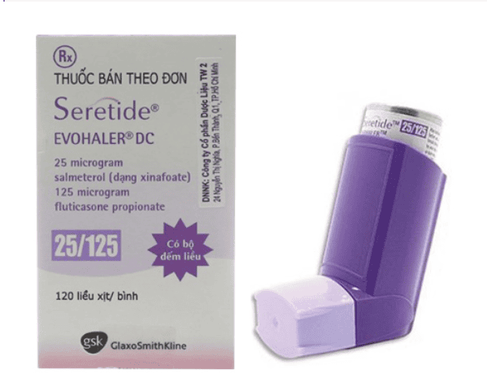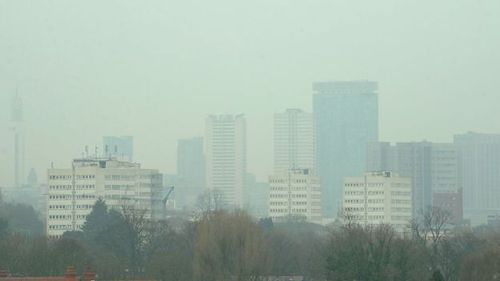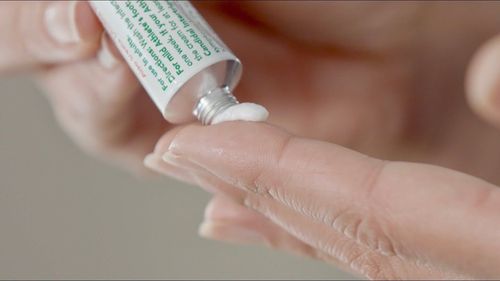This is an automatically translated article.
It's hard to believe that sometimes indoor air pollution can be even worse than outdoor. Because there are many possible sources of air pollution in the home, this can cause headaches, nausea, and irritation of your throat and eyes. Polluted indoor air is especially harmful to children because they breathe faster.1. What is indoor air pollution?
Indoor air can contain chemicals, irritants, chemicals with cancer risks, microbial agents, allergens, indoor fine dust...with significant concentrations then This is called indoor air pollution.
In fact, indoor air pollution is very common if there are no preventive measures. This can have a significant impact on health and especially affects babies and young children because they breathe faster, their bodies are weaker.
2. Sources of indoor air pollution
Maybe you do not pay attention to all the sources of indoor air pollution, it is surprising that there are many sources that can affect indoor air. Here are some causes of pollution:
2.1. Indoor carpets can generate chemicals There are many people who are tired of feeling headaches, rashes, itchy eyes and throats after installing carpets without knowing that the carpet, padding and carpet adhesives with the floor are waste. release potentially harmful gases. To limit the source of pollution, choose low-VOC carpets, which you should spread out a few days in advance. Keep your face out of the house during installation and keep the house well ventilated for the following days. For children with allergies and asthma, consider other flooring options.
2.2.Wall paint Paint and paint removers can emit harmful gases. To minimize health risks, choose paints that are low in VOCs and leave windows open while painting and for a few days while the paint dries. Try not to keep leftover paint cans as gas can leak, even from sealed containers, and if paint must be stored, store paint in a well-ventilated area away from major living areas in the home.
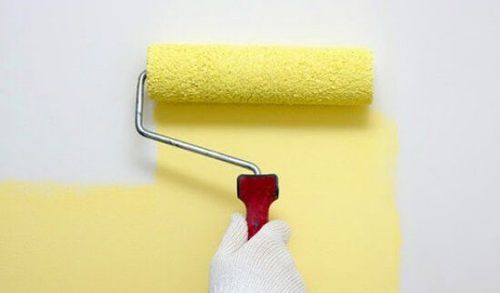
Sơn tường có thể gây ô nhiễm không khí trong nhà
2.3.Chemical from handmade toys It's better to let children go out often to learn more than to let them regularly come into contact with toys and crafts. Depending on the product and the duration of exposure, the risk of harm varies, fumes from markers, glue and other art supplies can cause headaches and eye, nose, and throat irritation. Overcooked polymer clay can release harmful chemicals into the air, and even seemingly innocuous ones can contain solvents that are dangerous to inhale.
2.4. Cleaning products Chemicals found in some household cleaners can be toxic if inhaled or touched, causing allergic skin rashes and respiratory irritation. This is especially likely to happen to people who are prone to skin or breathing problems. Those that contain ammonia and chlorine can be especially irritating to children with asthma. Try cleaning with hot water, baking soda, microfiber cloth, or less toxic natural cleaning products.
2.5. Clothes after dry cleaning Dry cleaning often uses perchlorethylene, a chemical that has been found to cause cancer in animals. When you bring new dry-cleaned clothes into your home, members of your household can breathe in this toxic chemical. Let dry cleaned clothes for a few days before wearing or wash them by hand or in the washing machine.
2.6. Secondhand smoke Living in a home where someone smokes can make children more susceptible to respiratory infections such as pneumonia, bronchitis and dry cough, otitis media, etc. Children with asthma can have frequent and severe attacks. worse after frequent inhalation of cigarette smoke. Inhaling secondhand smoke can trigger asthma in children who have never had symptoms. Secondhand smoke is a toxic substance left in clothing, mattresses and carpets that can also harm children, especially when they play or crawl on the floor.
Therefore, to avoid harming yourself and those around you, you should stop smoking. Otherwise, smoke in open spaces and few people.
2.7. Air pollution from the kitchen An improperly installed or installed gas stove can release harmful gases into the home. At low levels, carbon monoxide (CO) can cause fatigue, with higher levels causing nausea, headaches, confusion and even death. Nitrogen dioxide (NO2) can cause breathing problems, especially in children. Make sure the burners are adjusted correctly so that the flame tips are always blue. Ventilate the stove with an external blower to avoid dangerous gas build-up.
2.8. Chimneys and furnaces If you use the furnace while the central air conditioning system has problems, it will lead to poor ventilation, allowing dangerous gases such as carbon monoxide to accumulate in your home. Ensure that the furnace including the chimney and chimney is always well maintained to avoid possible accumulation of toxic gases in the home.
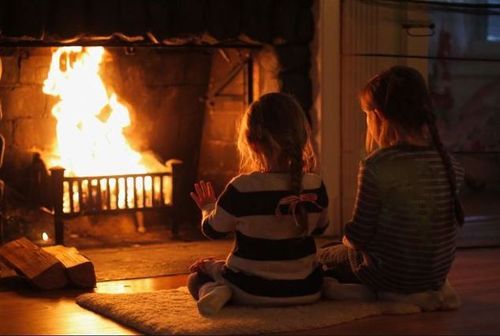
Lò đốt có thể là tác nhân gây ô nhiễm trong nhà
2.9. Dangers of Radon Radon (Rn) is a dangerous gas that is formed when uranium breaks down naturally in soil, rock, or water. Radon can enter homes through cracks in floors or at wall junctions, gaps around pipes, small holes in hollow block walls, or surrounding sewers, and radon levels are often higher in cellars. or living space underground. Radon is second only to smoking as a cause of lung cancer. Children may be more sensitive to radon because they breathe faster and take in more air. You can test radon levels in your home with a kit or call a radon tester.
2.10. Air coolers Air fresheners can cause breathing problems and headaches for some people. In one study, nearly a third of people with asthma reported breathing problems when exposed to air fresheners. Tests by the Natural Resources Defense Council show that some air fresheners contain phthalates, a chemical linked to endocrine and developmental problems in children. Instead of using a cooler, use natural herbs like rosemary, basil or mint and have good ventilation to freshen the air.
2.11.Formaldehyde in furniture Formaldehyde is a common substance in pressed wood furniture as well as drapes and pressed clothing. Children are especially susceptible to respiratory irritation from exposure to formaldehyde fumes. Since new products give off stronger emissions, leave them out before bringing them into the house and wash the curtains thoroughly before use.
The above are possible sources of indoor air pollution that you may not be aware of. Avoid it to limit the risk of harm from it. Especially with babies in the house can be more seriously affected.
Follow Vinmec International General Hospital website to get more health, nutrition and beauty information to protect the health of yourself and your loved ones in your family.
Please dial HOTLINE for more information or register for an appointment HERE. Download MyVinmec app to make appointments faster and to manage your bookings easily.
Reference source: webmd.com



